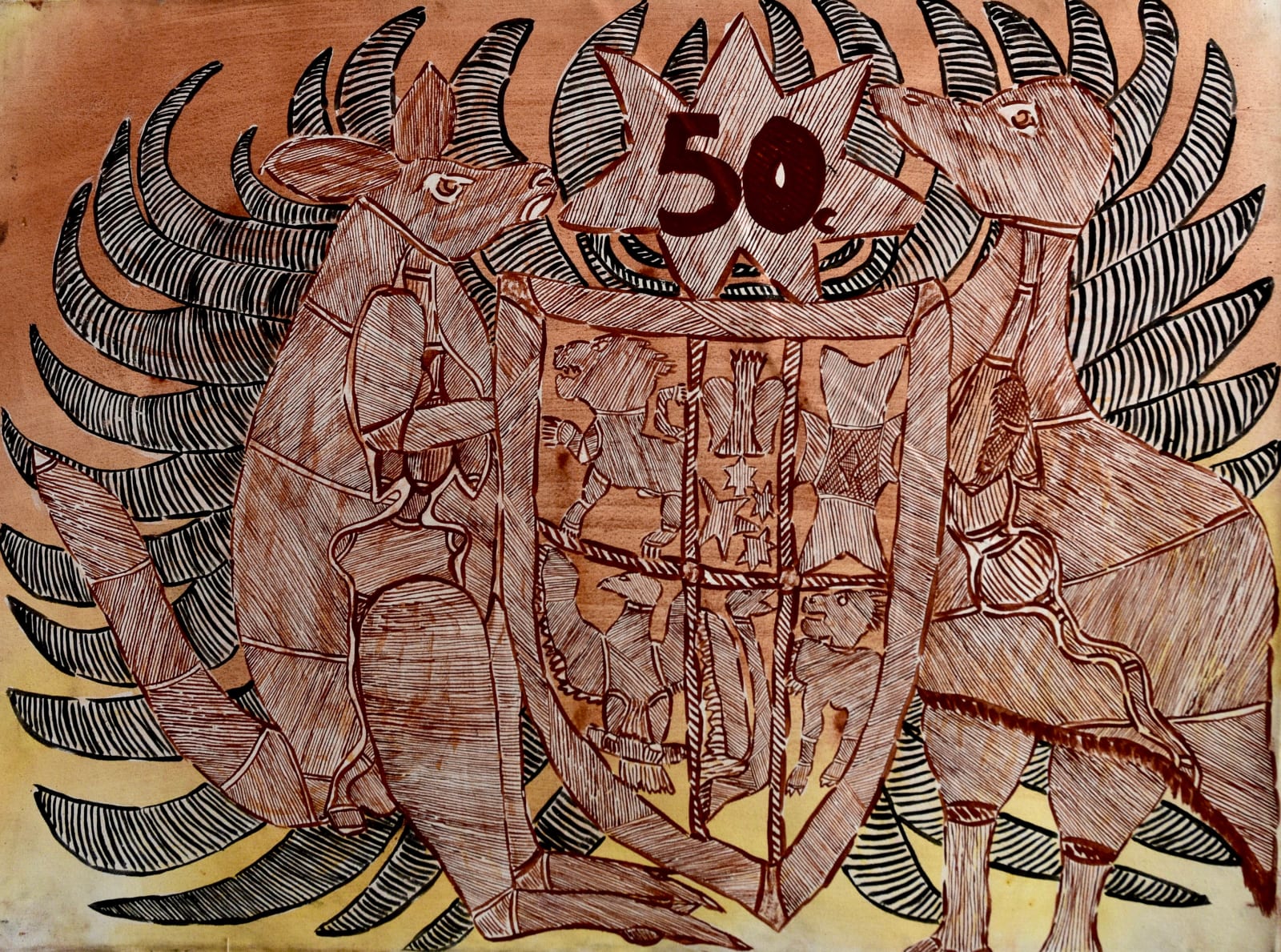BININJ DJANG (MEN DREAMING): JOE GUYMALA, SHAUN NAMARMYILK, GRAHAM BADARI, GLEN NAMUNDJA
Past exhibition
Shaun Namarnyilk
Kunwardde Mayhmayh (Money Animals), 2021
acrylic on canvas
102 x 76 cm
186-21
This painting is a play on the Kunwinjku word 'kunwarrde' which means 'stone', as in 'kunwarrdewarrde' or 'stone country, where the community of Gunbalanya is situated. In Kunwinjku 'Kunwarrde' also...
This painting is a play on the Kunwinjku word 'kunwarrde' which means 'stone', as in 'kunwarrdewarrde' or 'stone country, where the community of Gunbalanya is situated. In Kunwinjku 'Kunwarrde' also means 'money' because the first coinage bininj people were introduced to reminded them of little pebbles. Shaun has used this double entendre to paint a contemporary interpretation on a traditional painting subject; that of 'stone country animals', where an artist would usually depict a number of the fauna found in
their home land. With this painting, Shaun has painted kunj (kangaroo) and Kurdukadji (emu). These two animals are Indigenous to Australia and can be found in the Stone Country of Arnhem Land. The kangaroo and emu are also shown on the 50C coin, as the coat of arms of Australia. However, this quotidian piece of currency, which many of us carry and use everyday, holds more than merely monetary value; the shield features symbols of each of the six states of Australia, and as the Northern Territory is a territory, any representation of Shaun's native administrative region, and the part of Australia with the highest proportion of Indigenous people as absent. Shaun has painted the two animals in X-ray style, an artistic tradition unique to western Arnhem Land, where the internal organs, cuts of flesh and sometimes the skeleton is depicted. The X-ray painting tradition, which can be seen in ancient rock art is a means by which elders teach young ones. Shaun's repainting of the Australian Coat of Arms in a traditional western Arnhem Land style undoes the negation of the Northern Territory, and of the Indigenous history of Australia. Shaun asserts the primacy of the NT as fundamental to the country as a political whole, as indeed Aboriginal people are to Australia.
their home land. With this painting, Shaun has painted kunj (kangaroo) and Kurdukadji (emu). These two animals are Indigenous to Australia and can be found in the Stone Country of Arnhem Land. The kangaroo and emu are also shown on the 50C coin, as the coat of arms of Australia. However, this quotidian piece of currency, which many of us carry and use everyday, holds more than merely monetary value; the shield features symbols of each of the six states of Australia, and as the Northern Territory is a territory, any representation of Shaun's native administrative region, and the part of Australia with the highest proportion of Indigenous people as absent. Shaun has painted the two animals in X-ray style, an artistic tradition unique to western Arnhem Land, where the internal organs, cuts of flesh and sometimes the skeleton is depicted. The X-ray painting tradition, which can be seen in ancient rock art is a means by which elders teach young ones. Shaun's repainting of the Australian Coat of Arms in a traditional western Arnhem Land style undoes the negation of the Northern Territory, and of the Indigenous history of Australia. Shaun asserts the primacy of the NT as fundamental to the country as a political whole, as indeed Aboriginal people are to Australia.
1
of
20
